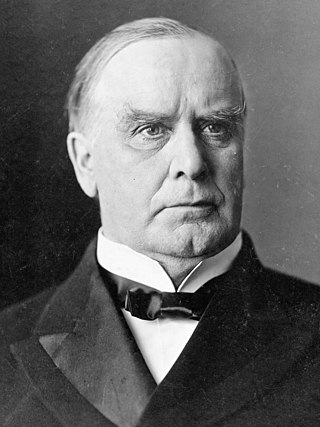
Presidential elections were held in the United States on November 6, 1900. Incumbent Republican President William McKinley defeated his Democratic challenger, William Jennings Bryan. McKinley's victory made him the eighth president to win consecutive re-election and first since Ulysses S. Grant accomplished the same feat in 1872. Until 1956, this would be the last time in which an incumbent Republican president would win re-election after serving a full term in office. This election saw the fifth rematch in presidential history but the first to produce the same winner both times; neither would occur again until 1956.
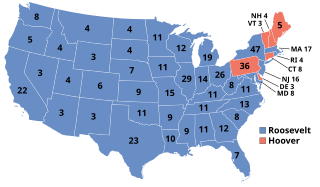
Presidential elections were held in the United States on November 8, 1932. Against the backdrop of the Great Depression, incumbent Republican President Herbert Hoover was defeated in a landslide by Democrat Franklin D. Roosevelt, the governor of New York and the vice presidential nominee of the 1920 presidential election. The election marked the effective end of the Fourth Party System, which had been dominated by Republicans, and it was the first time since 1916 that a Democrat was elected president.

Presidential elections were held in the United States on November 7, 1944, during World War II. Incumbent Democratic President Franklin D. Roosevelt defeated Republican Thomas E. Dewey to win an unprecedented fourth term. It was also the fifth presidential election in which both major party candidates were registered in the same home state; the others have been in 1860, 1904, 1920, 1940, and 2016.

A Presidential election was held in the United States on November 4, 1952. Republican nominee Dwight D. Eisenhower defeated Democratic Illinois Governor Adlai Stevenson II in a landslide victory, becoming the first Republican president in 20 years. This was the first election since 1928 without an incumbent president on the ballot.
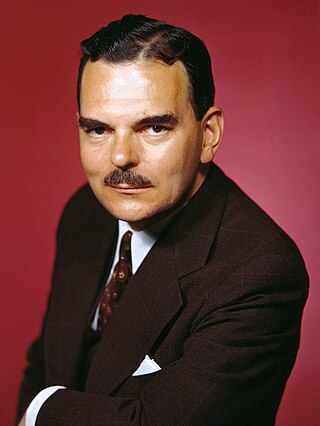
Thomas Edmund Dewey was an American lawyer and politician who served as the 47th Governor of New York from 1943 to 1954. He was the Republican Party's nominee for president of the United States in 1944 and 1948, losing the latter election to Harry S. Truman in a major upset. The 288 combined electoral votes Dewey received from both elections place him second behind William Jennings Bryan as the candidate with the most electoral votes who never acceded to the presidency.

Tammany Hall, also known as the Society of St. Tammany, the Sons of St. Tammany, or the Columbian Order, was an American political organization founded in 1786 and incorporated on May 12, 1789, as the Tammany Society. It became the main local political machine of the Democratic Party and played a major role in controlling New York City and New York state politics. It helped immigrants, most notably the Irish, rise in American politics from the 1850s into the 1960s. Tammany usually controlled Democratic nominations and political patronage in Manhattan for over 100 years following the mayoral victory of Fernando Wood in 1854, and used its patronage resources to build a loyal, well-rewarded core of district and precinct leaders; after 1850, the vast majority were Irish Catholics due to mass immigration from Ireland during and after the Irish Famine of the late 1840s.

Carmine Gerard DeSapio was an American politician from New York City. He was the last head of the Tammany Hall political machine to dominate municipal politics.
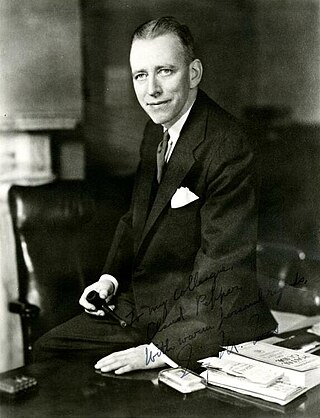
Irving McNeil Ives was an American politician and founding dean of the Cornell University School of Industrial and Labor Relations. A Republican, he served as a United States Senator from New York from 1947 to 1959. He was previously a member of the New York State Assembly for sixteen years, serving as Minority Leader (1935), Speaker (1936), and Majority Leader (1937–1946). A liberal Republican, he was known as a specialist in labor and civil rights legislation. Ives voted in favor of the Civil Rights Act of 1957.

The 1956 Democratic National Convention nominated former Governor Adlai Stevenson of Illinois for president and Senator Estes Kefauver of Tennessee for vice president. It was held in the International Amphitheatre on the South Side of Chicago from August 13 to August 17, 1956. Unsuccessful candidates for the presidential nomination included Governor W. Averell Harriman of New York, Senator Lyndon B. Johnson of Texas, and Senator Stuart Symington of Missouri.

The 1952 Democratic National Convention was held at the International Amphitheatre in Chicago, Illinois from July 21 to July 26, 1952, which was the same arena the Republicans had gathered in a few weeks earlier for their national convention from July 7 to July 11, 1952. Four major candidates sought the presidential nomination: U.S. Senator Estes Kefauver of Tennessee, Governor Adlai Stevenson II of Illinois, Senator Richard Russell of Georgia and Averell Harriman of New York.

Frank Smithwick Hogan was an American lawyer and politician from New York. He served as New York County District Attorney for more than 30 years, during which he achieved a reputation for professionalism and integrity.
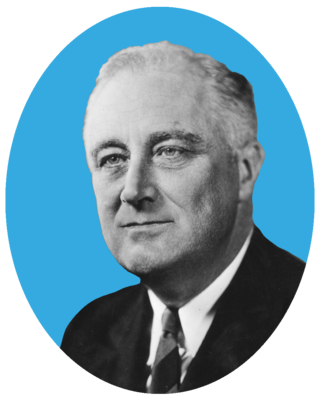
The 1932 Democratic National Convention was held in Chicago, Illinois June 27 – July 2, 1932. The convention resulted in the nomination of Governor Franklin D. Roosevelt of New York for president and Speaker of the House John N. Garner from Texas for vice president. Beulah Rebecca Hooks Hannah Tingley was a member of the Democratic National Committee and Chair of the Democratic Party of Florida. She seconded the nomination of Franklin Delano Roosevelt, becoming the second woman to address a Democratic National Convention. According to the White House Historical Association, Happy Days Are Here Again was the campaign song of the convention.

The 1954 New York state election was held on November 2, 1954, to elect the governor, the lieutenant governor, the state comptroller, the attorney general, the chief judge and three associate judges of the New York Court of Appeals, as well as all members of the New York State Assembly and the New York State Senate.

From March 11 to June 3, 1952, voters and members of the Democratic Party elected delegates to the 1952 Democratic National Convention, partly for the purpose of choosing a nominee for president in the 1952 United States presidential election. Incumbent President Harry S. Truman withdrew his candidacy for re-election after losing the New Hampshire primary to Senator Estes Kefauver of Tennessee. Kefauver proceeded to win a majority of the popular vote, but failed to secure a majority of delegates, most of whom were selected through other means.

The 1952 United States Senate election in New York was held on November 4. Incumbent Republican Senator Irving M. Ives was re-elected to a second term in office over Democrat John Cashmore with a then-record margin of victory.
Richard Horrocks Balch was an upstate New York businessman and political figure.

The New York City mayoral election of 1961 occurred on Tuesday, November 7, 1961. Incumbent Democratic Mayor Robert F. Wagner, Jr. won a decisive re-election victory for a third term in office. Wagner defeated the Republican nominee, state Attorney General Louis J. Lefkowitz, and the Citizens Party nominee, New York City Comptroller Lawrence E. Gerosa. Wagner received 51.03% of the vote to Lefkowitz's 34.46%, a Democratic victory margin of 16.57%.

The New York City mayoral election of 1957 occurred on Tuesday, November 5, 1957. Incumbent Democratic Mayor Robert F. Wagner, Jr. won re-election for a second term in office. Wagner defeated the Republican nominee, businessman Robert K. Christenberry.
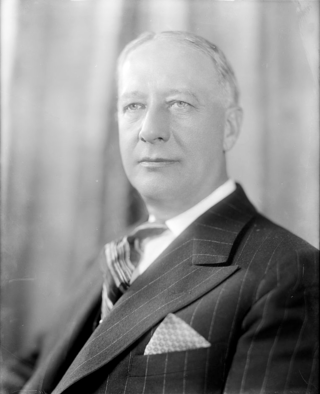
Al Smith, former governor of New York and the 1928 Democratic presidential nominee, ran an unsuccessful campaign for the party's 1932 presidential nomination. He ultimately lost to Franklin Delano Roosevelt, his one-time political ally, who would go on to win the general election.
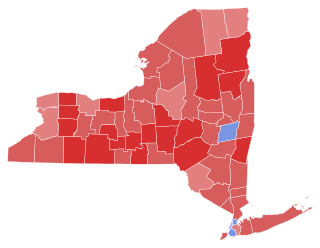
The 1950 New York gubernatorial election was held on November 7, 1950 to elect the Governor and Lieutenant Governor of New York. Incumbent Republican governor Thomas E. Dewey was re-elected to a third term in office, defeating Democratic U.S. Representative Walter A. Lynch.





















